Building a New Taskin:
being a photo-essay
of the construction of an instrument in my workshop,
done in Winter 1998/99.
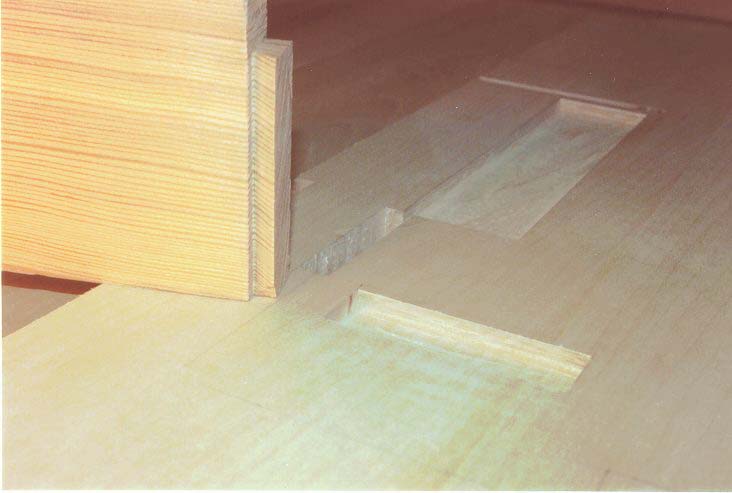
After
the lumber is milled and the flat parts cut, the joints are made. Here
is the spine with the upper and lower bellyrails. The lower has a full
sliding dovetail. the upper has a half dovetail - the leading edge is
dovetailed. The large rectangular mortise is for the pinblock, and the
vertical mortise to the front of that is for the nameboard.
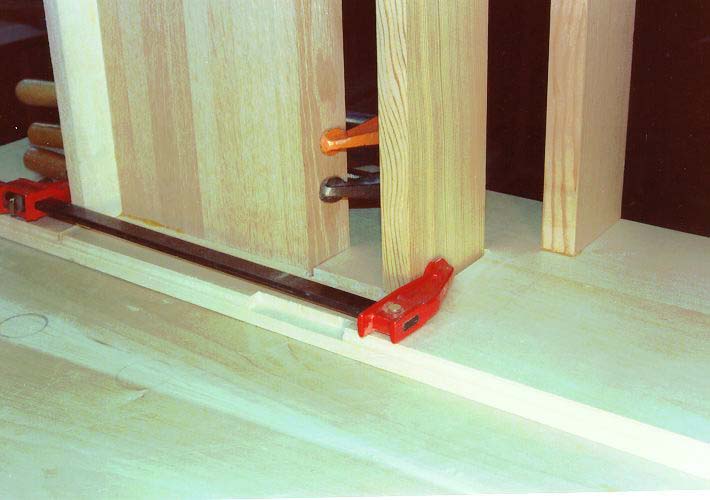
Here
is the bellyrail assembly. The mortise is overlarge: the upper bellyrail
is installed and pulled forward, locking the leading-edge dovetail in.
This is an idea I had from Benoist Stehlin; I don't know if it's in Taskin
instruments, but I wouldn't be surprised to find it so.
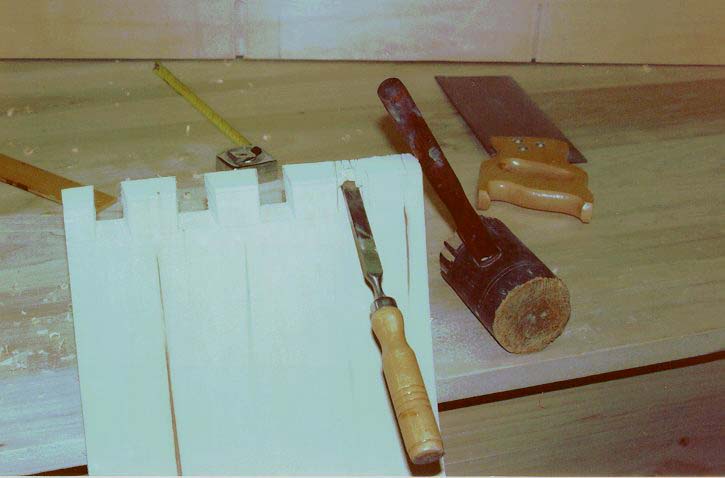
The
bentside. The dovetails are in the bentside to prevent the cheek from
pulling out forward. All have to be hand cut.
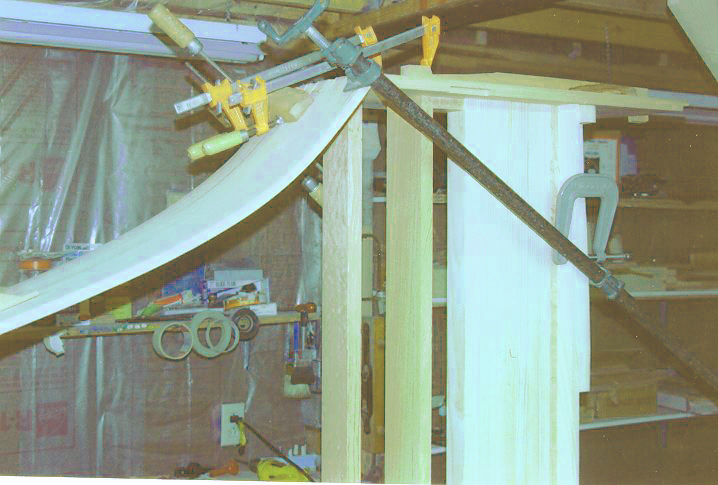
The bentside is
then installed with an assemblage of clamps that looks more complicated
than it really is. This is a solid basswood bentside, steam bent.
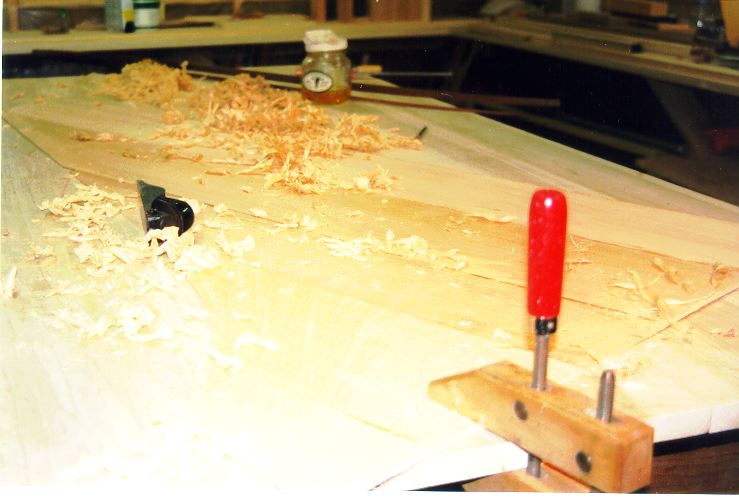
Thinning the soundboard.
This is where the music goes in. The amount of weight in a given area
influences the tone. The soundboard shown is Sitka spruce; I also use
Swiss pine.
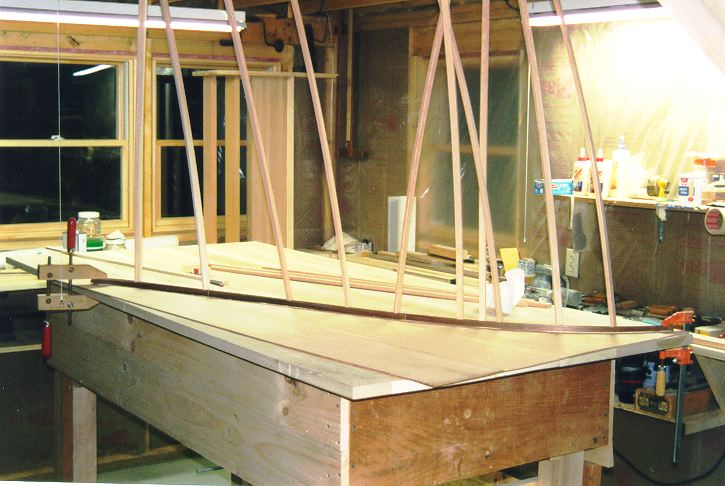
Here is the 8' bridge
being glued down, using a clamping technique known as "go-bars".
The glue here is yellow carpenter's glue (aliphatic resin), but the
soundboard staves are glued together using hot hide glue. I've also
used hot hide glue for bridges and ribs, and even (with some help from
a neighbor) in installing a soundboard.
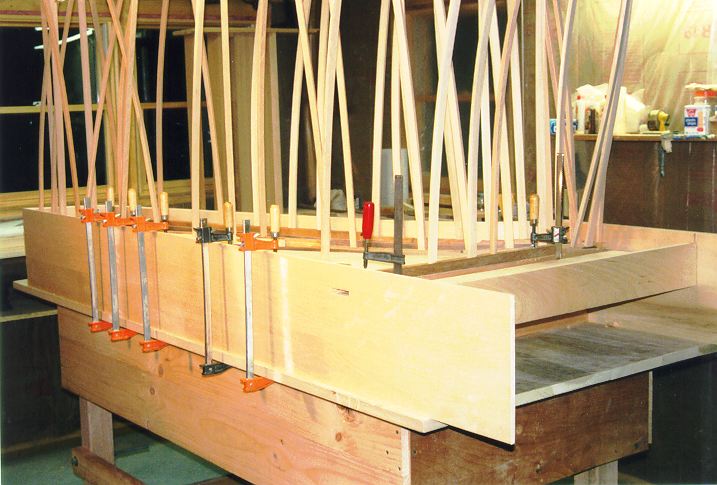
Installing the soundboard.
A forest of go-bars.
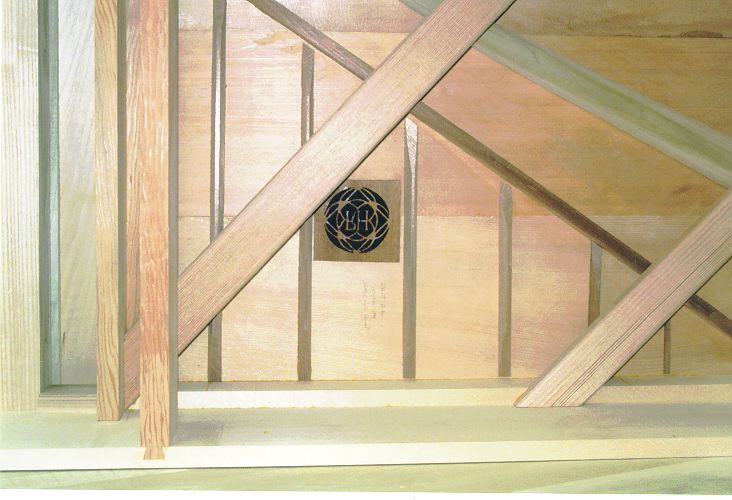
The underside of
the soundboard in the case. Redwood ribs, Douglas fir framing, poplar
boudin, basswood case. The soundboard is signed and dated beside
the maker's mark.
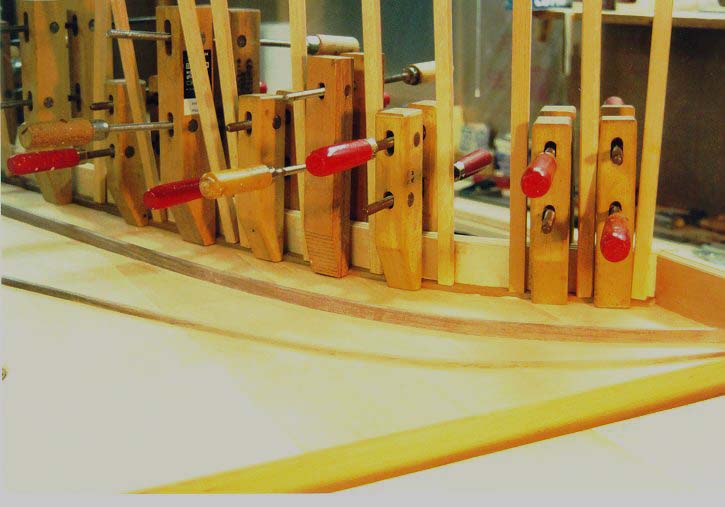
Next the 8' hitchpinrail
is glued in. Both the bridges and the hitchpinrail are walnut. A brass
gap spacer will be installed when the instrument is strung.
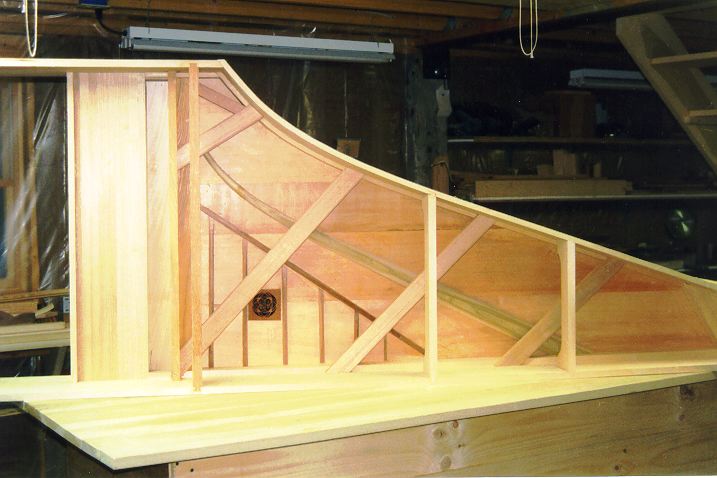
The completed case,
with soundboard installed. The Taskin framing is light but sturdy, although
many other antique French doubles are framed more lightly.
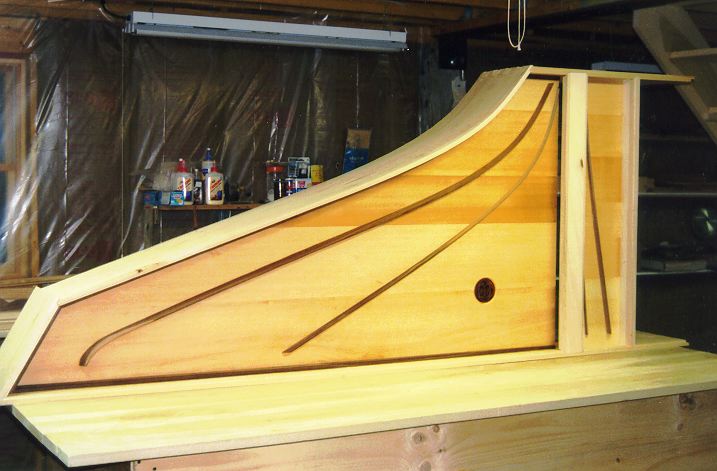
The instrument is
now nearly ready to go out for a soundboard painting by Marilee Dudash
(wife of Carl Dudash, harpsichord maker in Connecticut). After that
the enjoyable part comes: installing the action and making the harpsichord
play.
top
|